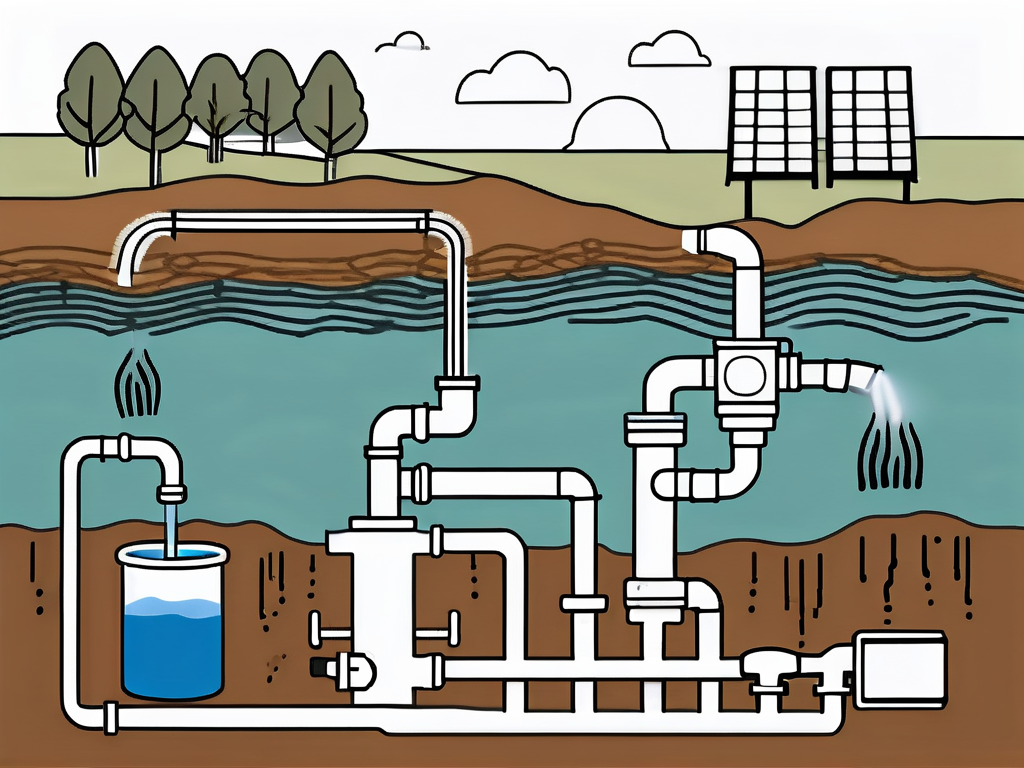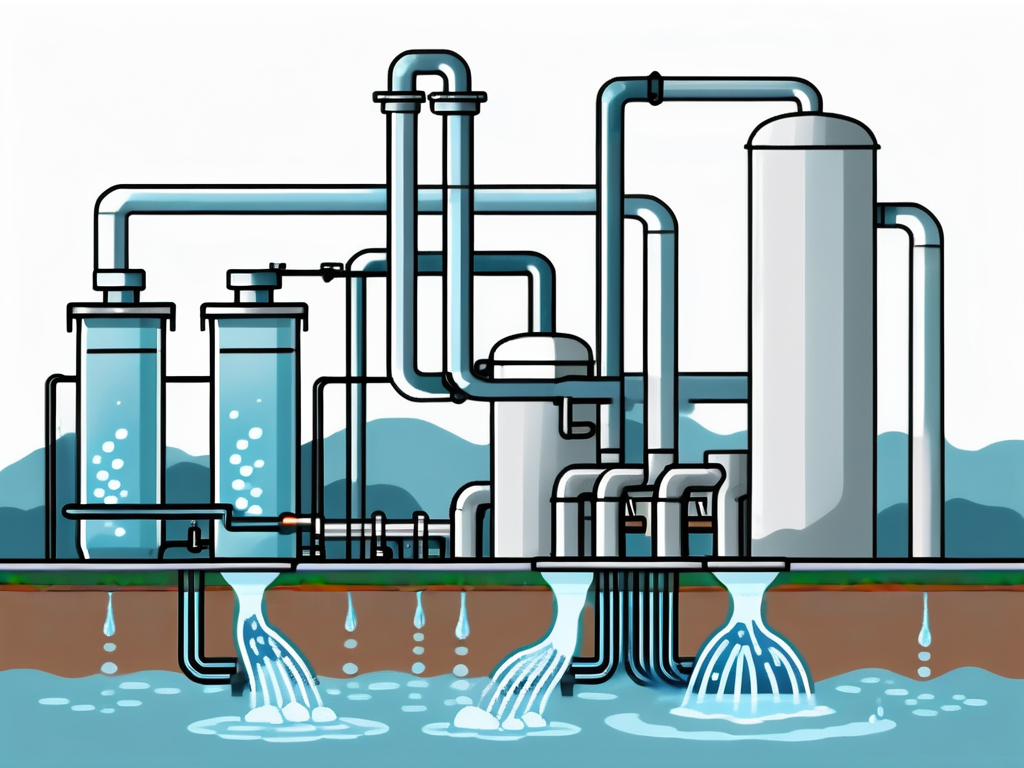
Onsite Wastewater Treatment: Wastewater Treatment Explained
Onsite wastewater treatment is a crucial process in the management of wastewater produced by residential, commercial, and industrial establishments. This process involves the collection, treatment, and disposal or reuse of wastewater on the property where it is generated. The main goal of onsite wastewater treatment is to prevent the contamination of surface water and groundwater resources, protect public health, and maintain environmental sustainability.
Onsite wastewater treatment systems (OWTS) are typically used in areas where centralized wastewater treatment facilities are not available or not economically feasible. These systems are designed to treat wastewater at its source, reducing the need for extensive sewer networks and large-scale treatment plants. This article delves into the intricate details of onsite wastewater treatment, explaining its importance, the various methods used, and the factors that influence its effectiveness.
Importance of Onsite Wastewater Treatment
The importance of onsite wastewater treatment cannot be overstated. It plays a vital role in protecting public health and the environment. Untreated or inadequately treated wastewater can contain harmful bacteria, viruses, parasites, and chemicals that can cause disease in humans and animals. By treating wastewater onsite, these harmful substances can be removed or reduced to safe levels before the water is discharged back into the environment.
Onsite wastewater treatment also helps to conserve water resources. Treated wastewater can be reused for irrigation, flushing toilets, and other non-potable uses, reducing the demand for fresh water. Furthermore, by treating wastewater onsite, the need for costly and energy-intensive sewer infrastructure can be minimized, contributing to sustainable and resilient urban development.
Public Health Protection
One of the primary goals of onsite wastewater treatment is to protect public health. Wastewater can contain a wide range of pathogens, including bacteria, viruses, and parasites, which can cause diseases such as cholera, typhoid, hepatitis, and giardiasis. Onsite wastewater treatment systems are designed to remove or inactivate these pathogens, reducing the risk of disease transmission.
Onsite wastewater treatment also helps to control the spread of antibiotic-resistant bacteria. Wastewater can contain high concentrations of antibiotics and other antimicrobial substances, which can promote the development of antibiotic-resistant bacteria. By treating wastewater onsite, these substances can be removed or broken down, helping to prevent the spread of antibiotic resistance.
Environmental Protection
Onsite wastewater treatment plays a crucial role in protecting the environment. Untreated wastewater can contaminate surface water and groundwater resources, causing water pollution and harming aquatic ecosystems. By treating wastewater onsite, harmful substances can be removed or reduced to safe levels, preventing water pollution and protecting aquatic life.
Onsite wastewater treatment also helps to conserve water resources. Treated wastewater can be reused for irrigation and other non-potable uses, reducing the demand for fresh water. Furthermore, by treating wastewater onsite, the need for costly and energy-intensive sewer infrastructure can be minimized, contributing to sustainable and resilient urban development.
Methods of Onsite Wastewater Treatment
There are various methods of onsite wastewater treatment, each with its own advantages and disadvantages. The choice of method depends on several factors, including the type and volume of wastewater generated, the characteristics of the site, and the local regulatory requirements. Some of the most common methods of onsite wastewater treatment include septic systems, aerobic treatment units, and constructed wetlands.
Septic systems are the most common type of onsite wastewater treatment system. They consist of a septic tank where solids are settled out and partially decomposed, and a drain field where the remaining wastewater is treated and disposed of. Aerobic treatment units use aeration and bacteria to break down organic matter in the wastewater, producing a high-quality effluent that can be discharged directly into the environment or reused. Constructed wetlands mimic natural wetlands, using plants and microorganisms to treat wastewater.
Septic Systems
Septic systems are a popular choice for onsite wastewater treatment, especially in rural areas and small communities. They are relatively simple and inexpensive to install and maintain, and can effectively treat wastewater if properly designed and operated. A typical septic system consists of a septic tank and a drain field.
The septic tank is a watertight container that receives the wastewater from the property. In the tank, solids settle to the bottom to form a sludge layer, while fats and oils float to the top to form a scum layer. The remaining liquid, known as effluent, flows out of the tank and into the drain field.
Aerobic Treatment Units
Aerobic treatment units (ATUs) are a type of onsite wastewater treatment system that uses aeration and bacteria to break down organic matter in the wastewater. They are more complex and expensive than septic systems, but they produce a high-quality effluent that can be discharged directly into the environment or reused for non-potable purposes.
In an ATU, the wastewater is first pre-treated in a septic tank to remove solids. The pre-treated wastewater is then aerated to promote the growth of aerobic bacteria, which break down the organic matter. The treated wastewater is then disinfected, usually with chlorine or ultraviolet light, before being discharged or reused.
Constructed Wetlands
Constructed wetlands are a type of onsite wastewater treatment system that mimics natural wetlands. They use plants, microorganisms, and the natural processes of wetland ecosystems to treat wastewater. Constructed wetlands are particularly effective at removing nutrients, such as nitrogen and phosphorus, from wastewater.
There are two main types of constructed wetlands: surface flow and subsurface flow. In surface flow wetlands, the wastewater flows over the surface of the wetland, while in subsurface flow wetlands, the wastewater flows through a gravel or sand bed beneath the surface. Both types of wetlands can be effective at treating wastewater, but they require a relatively large land area and may not be suitable for all locations.
Factors Influencing the Effectiveness of Onsite Wastewater Treatment
The effectiveness of onsite wastewater treatment can be influenced by a variety of factors, including the characteristics of the wastewater, the design and operation of the treatment system, and the characteristics of the site. Understanding these factors can help in the selection, design, and operation of an effective onsite wastewater treatment system.

The characteristics of the wastewater, such as its volume, temperature, and the type and concentration of pollutants, can greatly influence the effectiveness of onsite wastewater treatment. For example, high volumes of wastewater can overload the treatment system, while high concentrations of certain pollutants can be difficult to remove. Similarly, the design and operation of the treatment system can also affect its effectiveness. For example, a poorly designed or improperly maintained system may not be able to effectively treat the wastewater.
Wastewater Characteristics
The characteristics of the wastewater can greatly influence the effectiveness of onsite wastewater treatment. The volume of wastewater generated can affect the size and design of the treatment system. For example, a system designed for a small household may not be able to effectively treat the wastewater from a large commercial establishment.
The temperature of the wastewater can also affect the treatment process. Biological treatment processes, such as those used in septic systems and ATUs, are temperature-dependent. These processes work best at moderate temperatures and can be less effective at very low or very high temperatures.
System Design and Operation
The design and operation of the onsite wastewater treatment system can also greatly influence its effectiveness. The system must be properly designed to handle the volume and characteristics of the wastewater. For example, the size of the septic tank and the drain field must be appropriate for the volume of wastewater and the soil conditions at the site.
The operation and maintenance of the system are also crucial. Regular inspections and maintenance can help to ensure that the system is working properly and can prevent problems before they become serious. For example, the septic tank should be pumped out regularly to remove the accumulated sludge and prevent it from clogging the drain field.
Site Characteristics
The characteristics of the site where the onsite wastewater treatment system is located can also influence its effectiveness. The soil type and depth, the water table level, and the proximity to water bodies can all affect the treatment and disposal of the wastewater.
For example, sandy soils may not provide adequate treatment of the wastewater before it reaches the groundwater, while clayey soils may not allow the wastewater to infiltrate properly, leading to surface ponding. Similarly, a high water table or proximity to a water body can increase the risk of water pollution if the wastewater is not adequately treated.
Conclusion
Onsite wastewater treatment is a crucial process in the management of wastewater, especially in areas where centralized wastewater treatment facilities are not available or not economically feasible. It plays a vital role in protecting public health and the environment, and in conserving water resources.

There are various methods of onsite wastewater treatment, each with its own advantages and disadvantages. The choice of method depends on several factors, including the type and volume of wastewater generated, the characteristics of the site, and the local regulatory requirements. Regardless of the method chosen, the effectiveness of onsite wastewater treatment can be influenced by a variety of factors, including the characteristics of the wastewater, the design and operation of the treatment system, and the characteristics of the site.



